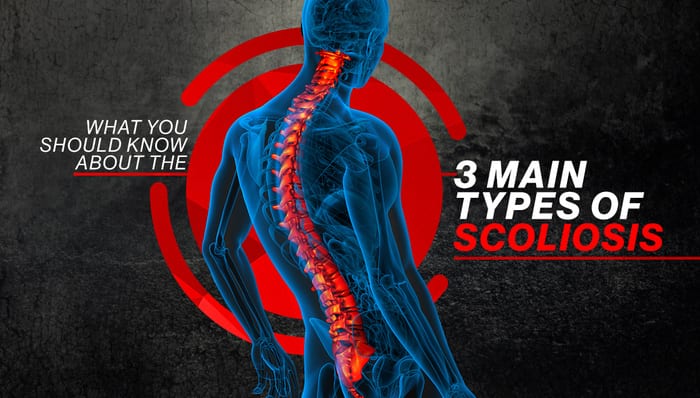What You Should Know About the 3 Main Types of Scoliosis
Scoliosis is an abnormal curve of the spine, or backbone. While the spine has normal curves, which can be appreciated when looking at it from the side, abnormal curves are those that are visible when looking at the spine from the front or back. With scoliosis, the bones of the spine twist to either side. They then turn on each other like a corkscrew. In most cases, the cause of scoliosis is unknown.
3 Main Types of Scoliosis:
Adolescent Idiopathic Scoliosis: This type of scoliosis occurs in patients between the ages of 10 and 18 years old. There is no identifiable cause for this condition. About 30% of patients have family history of scoliosis, suggesting there may be a genetic connection.
Congenital Scoliosis: Congenital scoliosis is caused by a defect present at birth. Causes can be from bones being partially formed, not separated correctly or absent during the baby’s development in the womb. This type of scoliosis occurs in 1 in 10,000 newborns.
Neuromuscular Scoliosis: This type of scoliosis is caused by disorders of the brain, spinal cord, or muscular system. The alignment of the spine in thrown off due to the inability of the nerves and muscles to maintain proper balance. Things as common as being bow-legged or less common as having a sallow hip on one side are just a couple of examples of musculoskeletal causes of scoliosis. There are many more.
Scoliosis does have a hereditary component in that people with scoliosis are more likely to have children with scoliosis. There is no correlation between the severity of the curve from one generation to the next. Overall, the most frequently identifiable cause of scoliosis is functional or compensatory. In this category, scoliosis is the result of a problem somewhere else in the body and the spine tries to “right” itself by twisting to make up for its underlying mechanical problems.
Scoliosis is about two times more common in girls than boys. It can be seen at any age, but it is most common in those over 10 years old. While scoliosis can cause back pain at any age, many people with it don’t complain until later in life. As they grow older, the curve can get worse. If it becomes too severe, it can affect the heart and lungs so much that corrective surgery with rods is required. Fortunately, that only occurs in a minority of cases.
How to Treat Scoliosis
Whether surgery is performed or not, spinal pain can persist. One of the best treatments is prevention. Strengthening and stretching from an early age is important. With more severe curves, bracing is frequently tried to retard progression of the curve. Electrodiagnostics such as electromyography and nerve conduction studies can help determine if there is associated nerve damage. A diagnostic musculoskeletal ultrasound can isolate weak, atrophied muscles and strained ligaments.
Trigger point injections (Xylocaine into muscle groups), prolotherapy (injections of natural compounds to strengthen ligament), and electrical muscle stimulators (electric devices that both strengthen and massage the muscles) can offer excellent relief. Proliferative injections (medication that regrows ligament) and platelet-rich plasma grafting (injecting a person’s own growth factors into areas of weak muscle or ligament) is more aggressive but highly effective for both pain control and repair of injured structure.
Judicious use of medications, an emphasis on nutrition, self-help techniques and regular exercise are a few other useful additions to treatment. If spinal pain interferes with activities of daily living, there are many options available to both treat the root cause and provide relief. While scoliosis is a lifelong condition, if someone is willing to put energy into improving their overall wellness, a great impact on quality of life can be accomplished.
If you are suffering from scoliosis, call us today for an appointment to see how we can help! 1-864-235-1834






